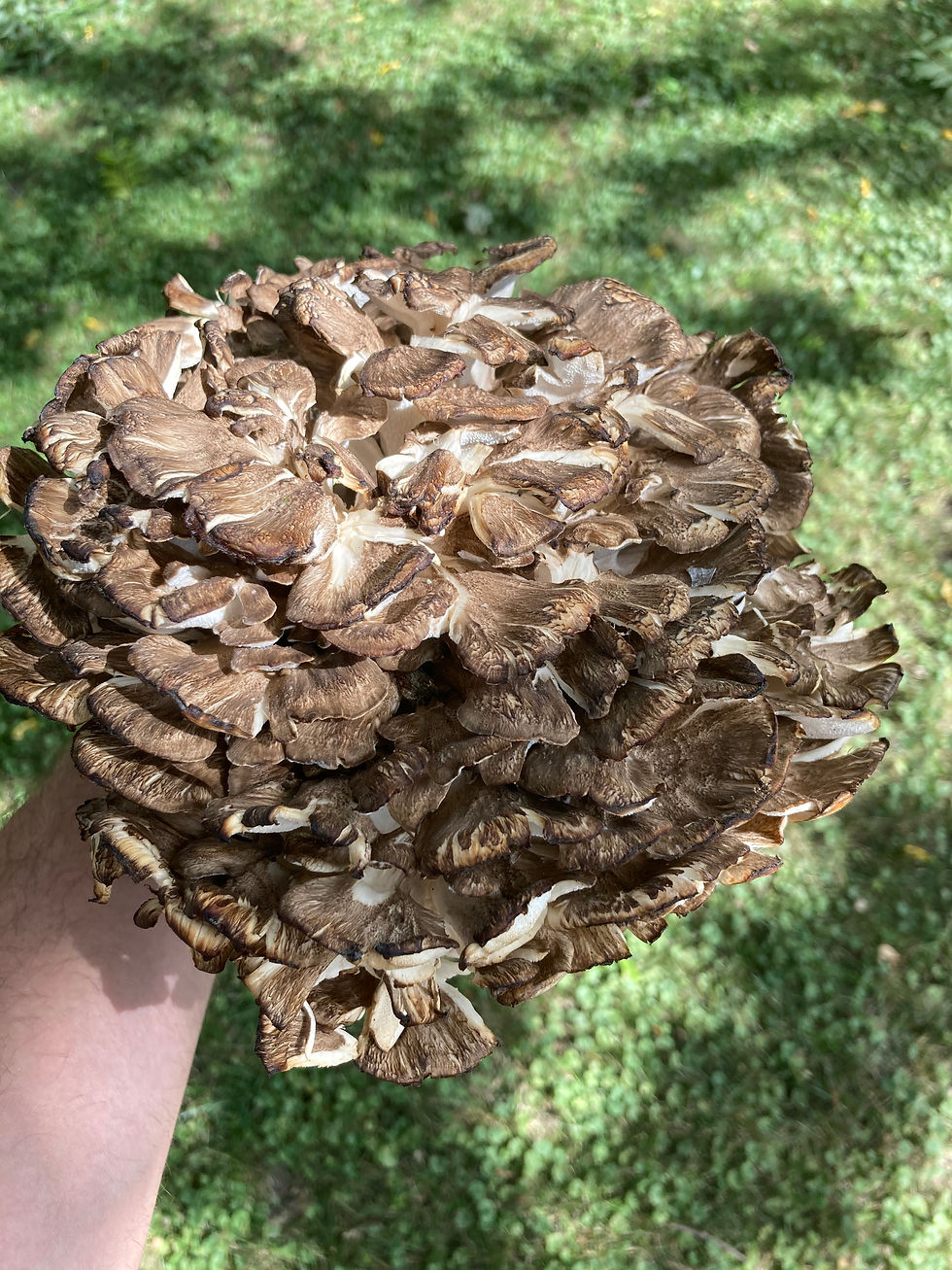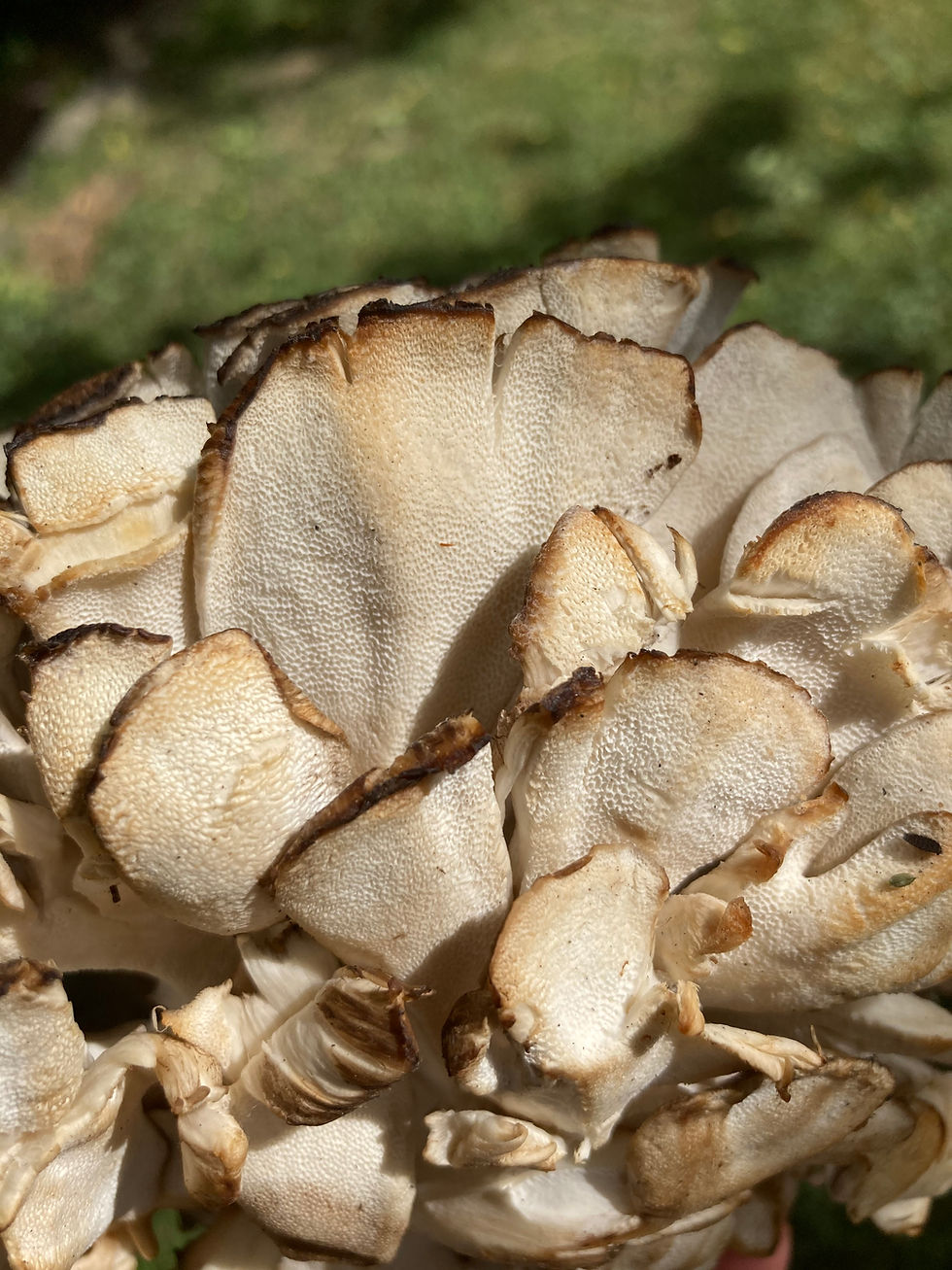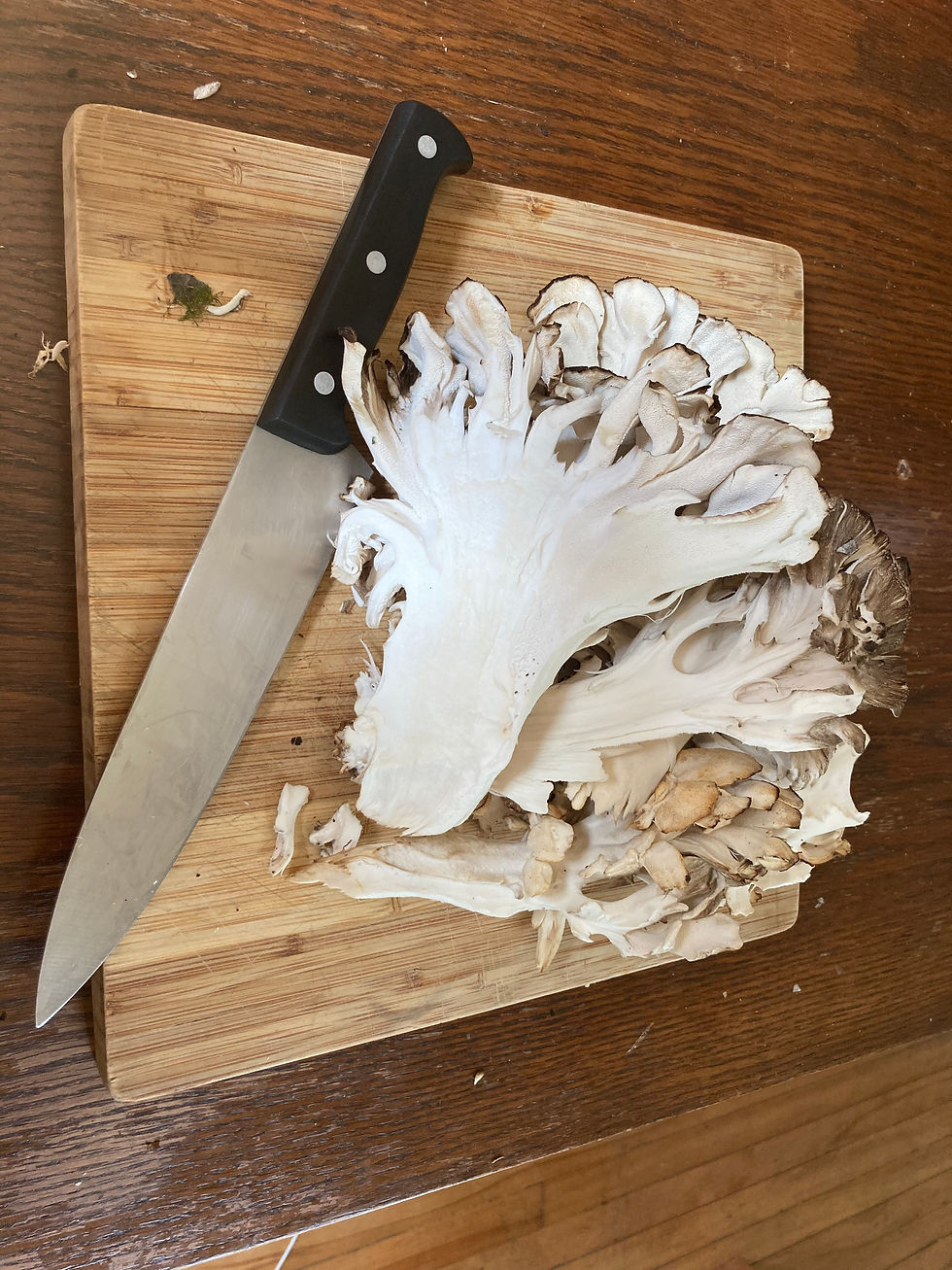Hen of the Woods or Maitake
- Ed Joice

- Sep 26, 2020
- 3 min read
I love names that include “of the Woods” because it sounds so country in an endearing kind of way, but also most Japanese names just sound sexier. I use them interchangeably. Either name here that you prefer, you oughta go with--both I should add are so commonly used, typically if someone knows one they know the other. It is fair to point out, of course, that the name “Hen of the Woods” is due to the fact that this mushroom, at a glance, looks like a feathered critter on the forest floor or tucked up against the base of a tree, much like a grouse. Hence the name Hen of the Woods (grifola frondosa). The name, however, is the least remarkable attribute of this mushroom, aside from, perhaps, its earth toned colors. What my favorite part of maitake is that it is one of the few mushrooms that can grow to be very large and yet it still maintains both an excellent flavor and texture at the same time.

How to identify Maitake?
Maitake is a polypore. For any mushroom, if it is a polypore it means that underneath the “cap” of the mushroom it has “pores” rather than gills (portabellos have gills, if you’re not sure what i mean by gills). Aside from the fact that it has pores, there are a number of other important considerations. So, generally speaking, if a mushroom is called a “polypore” it is not a mushroom that grows like a mushroom. What I mean by that is that mushrooms that grow from the ground and have a normal looking cap and stem but also have pores under the cap are called “boletes”. I’ve got an article about them if you’re interested.

HOWEVER, generally speaking, a polypore is any mushroom that has a porous surface under the cap but does not grow like a typical mushroom. Instead they typically grow as a shelf fungi off of the side of a dead tree or, in the case of maitake or others, sometimes grow as big clumps from the roots or base of the trunk. Maitake will specifically grow not as an individual mushroom, but rather as a large cluster, almost like if a single mushroom were a floret of broccoli, a hen of the woods would be the entire bunch of broccoli. It has many “petals” growing from a central stem and at first when the fungi is young will be about the size of a fist, but once it has gotten older--depending on conditions this could be about a week--might be the size of a volleyball or even as large as a medicine ball. They can get to be pretty big.
Maitake almost always grow very close to the trunk of a tree, typically white oak but occasionally red oak as well. I have once found one at the base of a birch, but it may well have been growing from the root of a nearby white oak. Sometimes, if they are growing from the roots, they can be five or ten feet away from a tree, but they are unlikely to be growing thirty or forty yards away from a host tree the way that chanterelles or morels might do. They also grow as large clumps, as noted before, almost like big broccolis or cauliflowers.
A few other Polypores to be aware of
So probably the most common mushroom to be confused for a maitake is the black staining polypore (meripilus sumstinei). It grows, just like a maitake, from the base of a tree or from roots, and have a whitish or creamy colored porous underside as well as a tan or brown topside of the cap. These are all helpful ID traits. The most notable difference is that it is more likely to be “layered” with stripelike features. It is also likely to be very tough and almost like shoe leather in texture or even like mulch. Lastly, and where it gets the name, is the fact that after you press on the flesh of this fungi, or break it open, it will slowly begin to bruise to a blackish stain. I will note that black staining polypore is an edible mushroom, and some folks consider it to be very good for a mushroom broth. It is not, however, your prized hen of the woods.
How to use it in the kitchen?

Hens, like almost any mushroom, in my opinion, is amazing simply cut up into small pieces and sauteed with some butter and garlic or shallots and served simply over bread or pasta. However, where it really shines is when you treat it like a chicken of the woods, which is to say, treat it like chicken. So marinate, then cook, whether that is to fry, grill, or sautee, then serve accordingly. Hen of the woods has the dense, moist, stringy texture of poultry and can be treated much like it.






Comments